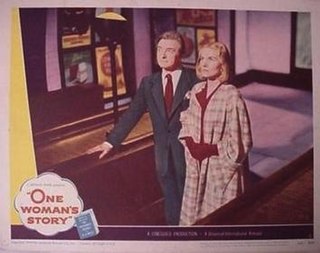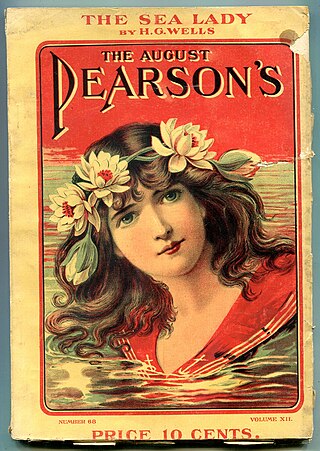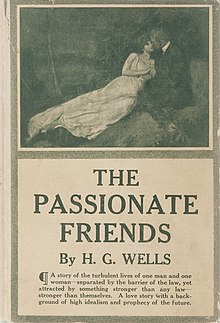
The Open Conspiracy: Blue Prints for a World Revolution was published in 1928 by H. G. Wells, when he was 62 years old. It was revised and expanded in 1930 with the additional subtitle A Second Version of This Faith of a Modern Man Made More Explicit and Plain. In 1931 a further revised edition appeared titled What Are We to Do with Our Lives?. A final version appeared in 1933 under its original title. Many of its ideas are anticipated in Wells's 1926 novel The World of William Clissold.

The Outline of History, subtitled either "The Whole Story of Man" or "Being a Plain History of Life and Mankind", is a work by H. G. Wells chronicling the history of the world from the origin of the Earth to the First World War. It appeared in an illustrated version of 24 fortnightly installments beginning on 22 November 1919 and was published as a single volume in 1920. It sold more than two million copies, was translated into many languages, and had a considerable impact on the teaching of history in institutions of higher education. Wells modeled the Outline on the Encyclopédie of Denis Diderot.

The Passionate Friends is a 1949 British romantic drama film directed by David Lean and starring Ann Todd, Claude Rains and Trevor Howard. The film is based on The Passionate Friends: A Novel (1913) by H. G. Wells. It describes a love triangle in which a woman cannot give up her affair with another man. The film was entered into the 1949 Cannes Film Festival.

A Modern Utopia is a 1905 novel by H. G. Wells.

The Wonderful Visit is an 1895 novel by H. G. Wells. With an angel—a creature of fantasy unlike a religious angel—as protagonist and taking place in contemporary England, the book could be classified as contemporary fantasy, although the genre was not recognised in Wells's time. The Wonderful Visit also has strong satirical themes, gently mocking customs and institutions of Victorian England as well as idealistic rebellion itself.

The World of William Clissold is a 1926 novel by H. G. Wells published initially in three volumes. The first volume was published in September to coincide with Wells's sixtieth birthday, and the second and third volumes followed at monthly intervals.

The Story of a Great Schoolmaster is a 1924 biography of Frederick William Sanderson (1857–1922) by H. G. Wells. It is the only biography Wells wrote. Sanderson was a personal friend, having met Wells in 1914 when his sons George Philip ('Gip'), born in 1901, and Frank Richard, born in 1903, became pupils at Oundle School, of which Sanderson was headmaster from 1892 to 1922. After Sanderson died, while giving a lecture at University College London, at which he was introduced by Wells, the famous author agreed to help produce a biography to raise money for the school. But in December 1922, after disagreements emerged with Sanderson's widow about his approach to the subject, Wells withdrew from the official biography and published his own work separately.

Select Conversations with an Uncle, published in 1895, was H. G. Wells's first literary publication in book form. It consists of reports of twelve conversations between a fictional witty uncle who has returned to London from South Africa with "a certain affluence," as well as two other conversations.

The Sea Lady is a fantasy novel by British writer H. G. Wells, including some of the aspects of a fable. It was serialized from July to December 1901 in Pearson's Magazine before being published as a volume by Methuen. The inspiration for the novel was Wells's glimpse of May Nisbet, the daughter of the Times drama critic, in a bathing suit, when she came to visit at Sandgate, Wells having agreed to pay her school fees after her father's death.
The New Machiavelli is a 1911 novel by H. G. Wells that was serialised in The English Review in 1910. Because its plot notoriously derived from Wells's affair with Amber Reeves and satirised Beatrice and Sidney Webb, it was "the literary scandal of its day".
The Discovery of the Future is a 1902 philosophical lecture by H. G. Wells that argues for the knowability of the future. It was originally delivered to the Royal Institution on January 24, 1902. Before appearing in book form, it was published by Richard Gregory in Nature on February 6, 1902, and was also published as part of the Annual Report of the Smithsonian Institution. Available online.
The Wife of Sir Isaac Harman is a 1914 novel by H. G. Wells.

An Englishman Looks at the World is a 1914 essay collection by H. G. Wells containing journalistic pieces written between 1909 and 1914. The book consists of twenty-six pieces ranging from five to sixty-two pages in length. An American edition was published the same year by Harper and Brothers under the title Social Forces in England and America.

Bealby: A Holiday is a 1915 comic novel by H. G. Wells.

The Undying Fire, a 1919 novel by H. G. Wells, is a modern retelling of the story of Job. Like the Book of Job, it consists of a prologue in heaven, an exchange of speeches with four visitors, a dialogue between the protagonist and God, and an epilogue in which the protagonist's fortunes are restored. The novel is dedicated "to All Schoolmasters and Schoolmistresses and every Teacher in the World."

Experiment in Autobiography is an autobiographical work by H.G. Wells, originally published in two volumes. He began to write it in 1932, and completed it in the summer of 1934.

The Bulpington of Blup is a 1932 novel by H. G. Wells. It is a character study analyzing the psychological sources of resistance to Wellsian ideology, and was influenced by Wells's acquaintance with Carl Gustav Jung and his ideas.

Joan and Peter, a 1918 novel by H. G. Wells, is at once a satirical portrait of late-Victorian and Edwardian England, a critique of the English educational system on the eve of World War I, a study of the impact of that war on English society, and a general reflection on the purposes of education. Wells regarded it as "one of the most ambitious" of his novels.

Anticipations of the Reaction of Mechanical and Scientific Progress upon Human Life and Thought, generally known as Anticipations, was written by H.G. Wells at the age of 34. He later called the book, which became a bestseller, "the keystone to the main arch of my work." His most recent biographer, however, calls the volume "both the starting point and the lowest point in Wells's career as a social thinker."

The Passionate Friends is a 1922 British romantic drama film directed by Maurice Elvey and starring Milton Rosmer, Valia, and Fred Raynham. It is based on H.G. Wells' The Passionate Friends: A Novel (1913), which was adapted again by David Lean for his 1949 film The Passionate Friends.
















